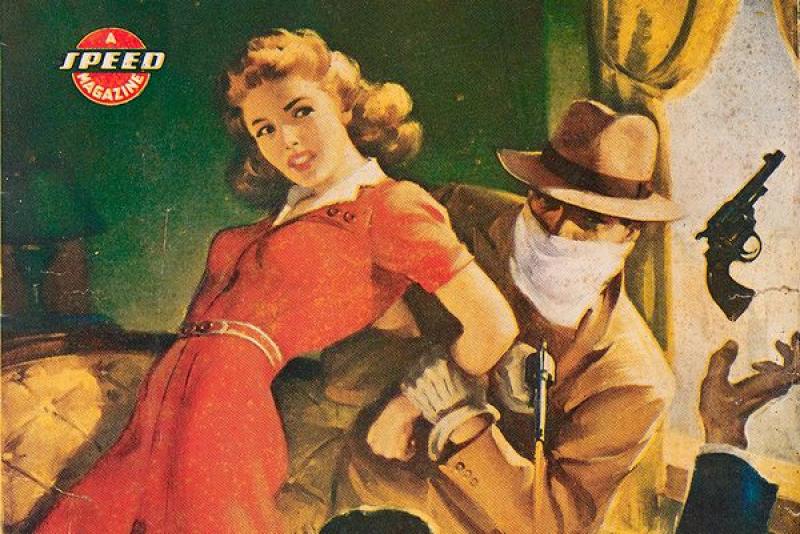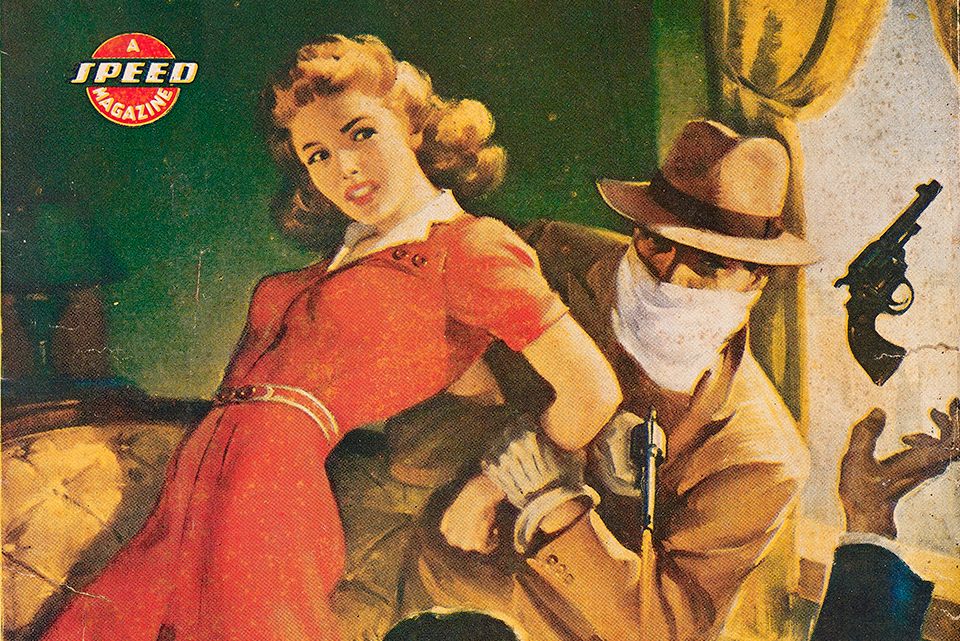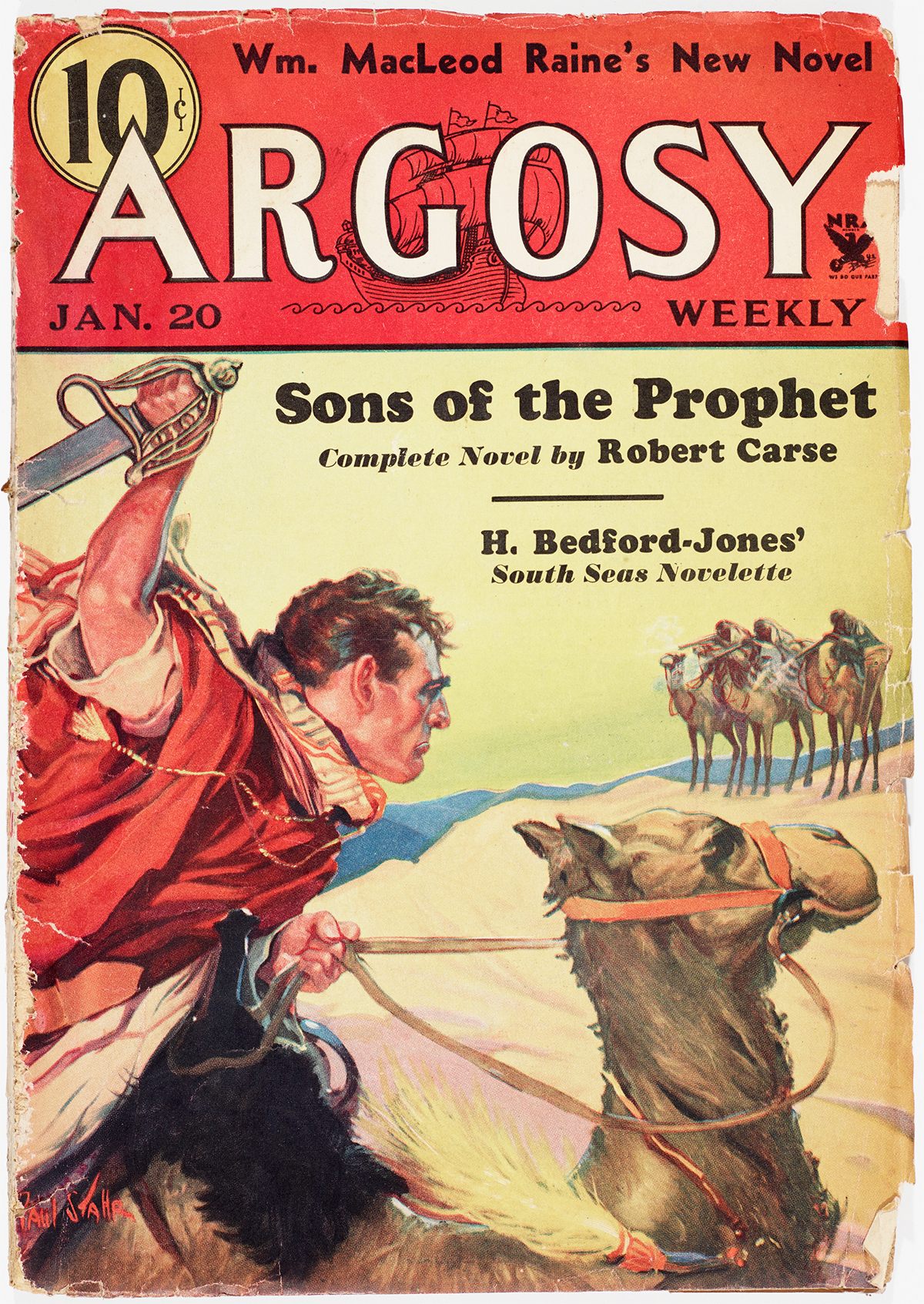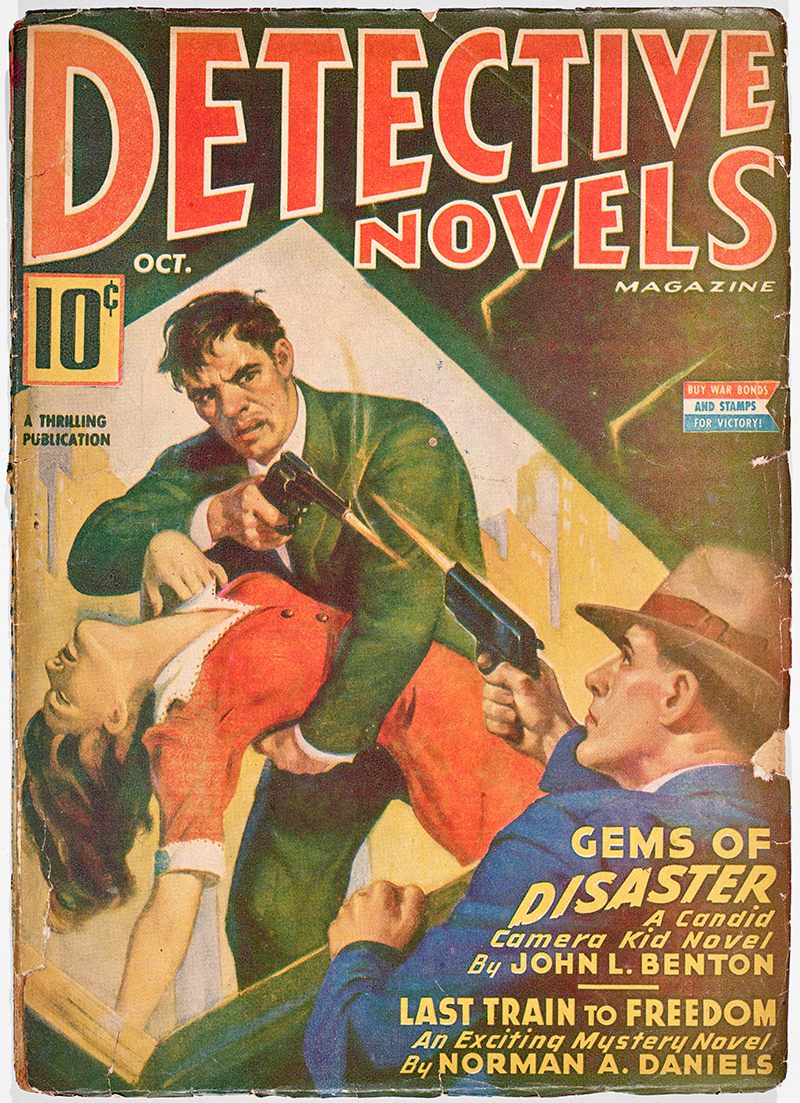Cheap Thrills, Private Dicks, and Desperate Dames From the Heyday of Pulp Fiction
By: Anika Burgess (Atlas Obscura)



Cheap Thrills, Private Dicks, and Desperate Dames From the Heyday of Pulp Fiction
The enduring appeal of the lowest common denominator.

Private Detective cover illustration, January 1946. All Images: Courtesy The Wolfsonian-FIU
From late 1800s to the 1950s, pulp magazines and books offered a seemingly endless churn of detective stories, adventure capers, crime dramas, Westerns, and science fiction tales. Cheaply priced and printed on low-quality wood-pulp paper—hence the name—these publications were as "pulpy" as could be: mass-produced, of questionable quality, and easily digestible. They were also disposable, titillating, and hugely popular: In the 1920s and '30s, some issues sold up to a million copies. They also shared one other characteristic: attention-grabbing cover art.
"Pulp magazine publishers typically used a better-quality wrapper to sell the periodicals, employing talented artists to render dramatic, sensationalist—and sometimes slightly salacious—color cover illustrations that captured gun-wielding gangsters, square-jawed detectives, seductive femme fatales, and damsels in distress in stop-action images," says Frank Luca, chief librarian at the Wolfsonian-FIU museum in Miami Beach, which is currently hosting the exhibition In the Shadows: American Pulp Cover Art .

Black Mask , November 1945.
The covers on display provide classic examples of the strangely distinctive art form. "Sex and violence were the mainstays of cover art for almost every genre from Westerns, to science fiction, fantasy, and true crime," says Luca. The pulps were also very much products of their eras, and often relied on stereotypes surrounding both gender and race: hypermasculine American men, damsels in distress, femme fatales, and people of Asian, African, or Middle Eastern descent depicted as "savage or "primitive," Luca explains.
Given the subject matter and negative reputation, it was common for both illustrators and authors to operate under pseudonyms. A number of well-known writers contributed to them, including Dashiell Hammett (who initially wrote for Black Mask under the pseudonym "Peter Collinson"), Ray Bradbury, and H.P. Lovecraft, whose short story "The Call of Cthulhu" was first published in Weird Tales .

Detective Fiction , December 1941.
Atlas Obscura has a selection of cover images from the exhibition, and spoke with Luca about the pulps' heyday, the eye-catching covers, their surprising impact on literacy, and the enduring appeal of detective stories. The exhibition runs through July 9, 2017.
Who was the target audience for pulp magazines and books?
Judging by the cover art and content, the vast majority of pulps were designed to appeal primarily to a young, lower-middle-class male audience. Many urban youths, immigrants, and other lower- and middle-class males were drawn to the pulps by the vivid cover art—which often featured voluptuous women in need of rescue—and became literate reading popular "adventure," "spicy," and "true crime" stories. There were also some "romance" and "confessional" pulp periodicals aiming for a female readership, such as Ideal Love, True Confessions, and All-Story Love Stories , and the Harlequin romance novels had their predecessors.

Murder for What? , 1936 novel.
Who were the illustrators who created these images, and what became of the original works?
There were a number of talented artists who painted the artwork that was put on the covers of pulp magazines, including George Gross, Rafael de Soto, Hugh Joseph Ward, Paul Stahr, and David Berger, among others. There are a number of aficionados who have collected and preserved some of the original artwork, but much has also been lost.

Argosy Weekly, January 1934.
What caused the demise of pulp magazines?
Two major factors contributed to the decline of pulp magazines after their heyday in the 1930s, '40s, and '50s. One factor was the challenge posed by competition from comic books. Another was the technological advances in the printing industry that made cover images deriving from photographs cheaper than the reproduction of original painted artwork by pulp cover artists.
What carries on the pulp tradition in popular culture today?
Although the flood of pulp magazines dried up in the late 1950s, pulp paperbacks never completely went away. Harlequin Enterprises, for example, was founded in 1949 as a paperback reprinting company, and continued to serve the "romance" and "women's fiction" market on into the present. After Quentin Tarantino's 1994 blockbuster Pulp Fiction helped to rekindle an interest in the "crime" pulps, a number of publishing houses have been capitalizing on that revival of popularity to reprint classic pulps, as well as to publish editions of new or neo-pulp stories. The popularity of the HBO True Detective series is illustrative of the American public's continuing fascination with this genre.

Broadway Virgin, 1949 book.
.

See What I Mean?, 1943 book.
.

Detective Novels Magazine, October 1943.
.

The Hucksters, 1952 book.
The Code of Conduct and Terms of Service must be complied with.
Any comment posted about politics or religion not relevant to the English Literature articles that are posted will be deleted.
The administrator reserves the right to delete any comment he considers to be offensive, off topic or of no value.
Videos or images or links to sources that the Administration cannot open must be described or explained when requested or they will be deleted.

Tags
Who is online
37 visitors


Once I grew out of reading the Walter Brooks 'Freddy the Pig' books I graduated, still a pre-teen, to reading the Sci-Fi pulp magazines my brother brought home to read - Galaxy, Super Science Stories, Astounding Science Fiction, Amazing Stories, Fantasy and Science Fiction, Analog Science Fiction - we read them all, and they contained stories by the great Sci-Fi authors: Ray Bradbury, Arthur C. Clark, Isaac Asimov, Robert Heinlein, Edward E ("Doc") Smith and more. We had no interest in any other pulp fiction topics - only Sci-Fi.
My favourites in those mags were the Skylark Series and Lens Series written by Edward E ("Doc") Smith. Looking back, I think they were really cowboy stories set in space. Most of the pulp fiction magazines died out, but some remain to this day.
Did anyone else develop their reading skills with the "pulps"?
Okay, I know, this is WAY off topic, but I'm the boss here and I had to find a place to put this...